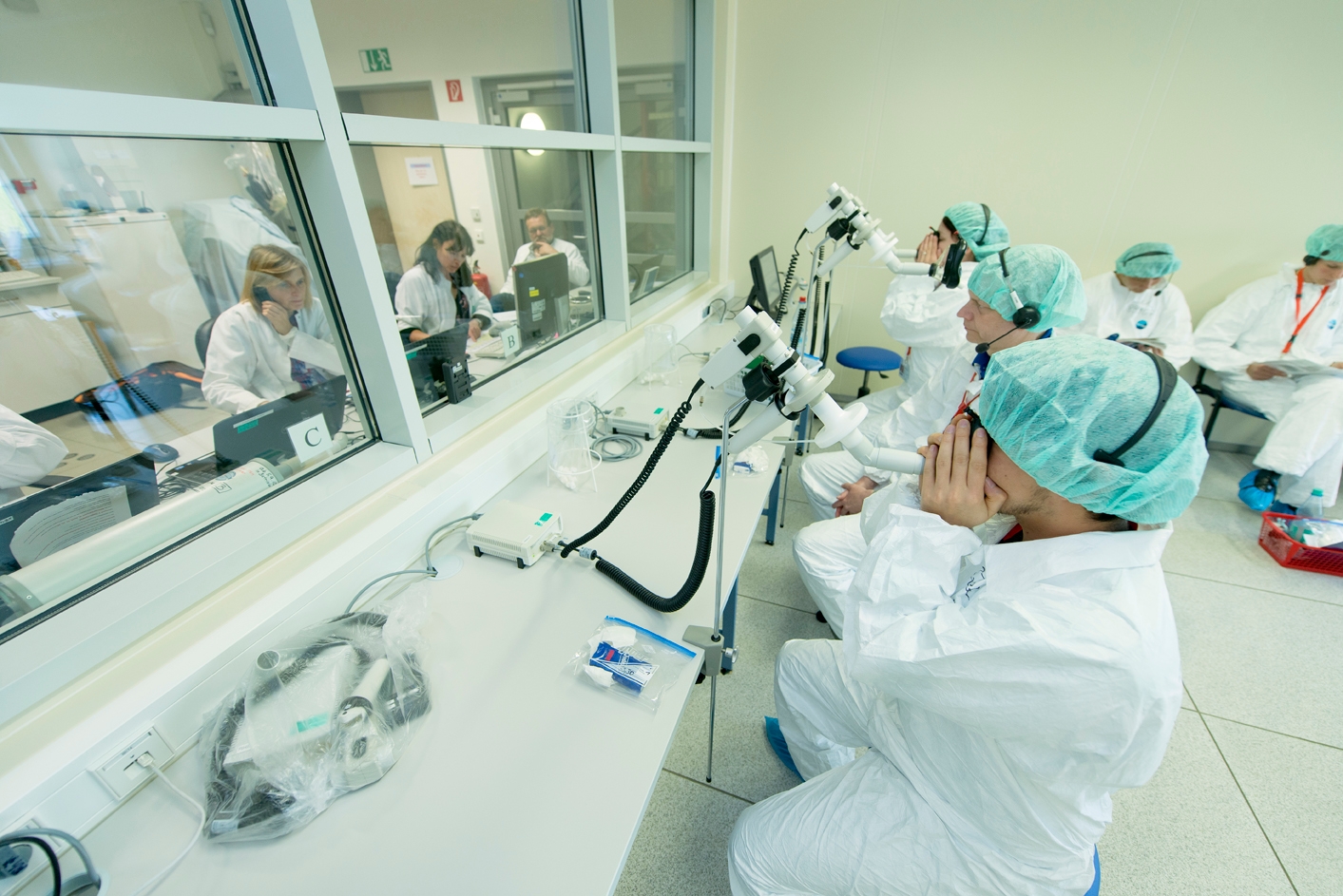Joint publication with the German Environment Agency (UBA)
New study defines threshold concentration for allergic reactions to birch pollen
How many birch pollen particles in the air trigger symptoms in individuals with allergies? A recent study published in the journal International Archives of Allergy and Immunology provides an answer: allergic symptoms occur at concentrations of 50 - 100 pollen per cubic meter of air.

Researchers from the Fraunhofer Institute for Toxicology and Experimental Medicine ITEM, in collaboration with the German Environment Agency (UBA), have technically advanced the institute’s Allergen Challenge Chamber (ACC) to enable controlled exposures to very low concentrations of birch pollen. In a patient-blinded, and clean air-controlled study, 15 individuals with confirmed birch pollen allergy were exposed to various pollen concentrations ranging from 0 to 1,000 pollen/m³.
The Total Nasal Symptom Score (TNSS) was used as the primary outcome measure for assessing allergic responses. The result: at a concentration of 100 pollen/m³, a significant increase in symptoms was observed. A slight increase was already measurable at 50 pollen/m³, but it remained below the threshold of clinical relevance.
These findings are not only of great importance for medical research but also for environmental authorities and pollen information services. They provide a robust basis for defining threshold values in pollen forecasts – with the goal of offering better protection for people with allergies.
Original publication in the journal International Archives of Allergy and Immunology:
“Determining the Threshold Concentration of Birch Pollen for Inducing Allergic Symptoms Using an Allergen Challenge Chamber”
Authors: Nadja Struß¹; Philipp Badorrek¹; Katharina Schwarz¹; Horst Windt¹; Wolfgang Straff²; Conny Höflich²; Jens M. Hohlfeld¹
¹Fraunhofer Institute for Toxicology and Experimental Medicine ITEM, Hannover, Germany
²German Environment Agency (UBA), Environmental Medicine and Health Effects Assessment, Berlin, Germany
 Fraunhofer Institute for Toxicology and Experimental Medicine
Fraunhofer Institute for Toxicology and Experimental Medicine